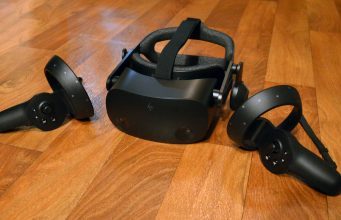
HP’s newest VR headset, Reverb G2, is finally here. Promising to bring some of the features of Valve’s Index to the Windows VR scene, along with class-leading resolution, new controllers and better tracking. Read on to find out if it delivers.
Before we break into the review, here’s a recap of Reverb G2 specs:
| Resolution | 2,160 × 2,160 (4.7MP) per-eye (LCD) |
| Refresh Rate | 90Hz |
| Lenses | Single element Fresnel |
| Field of View | 114° diagonal |
| Optical Adjustments | IPD |
| IPD Range | 60–68mm |
| Connectors | USB-C, DisplayPort, Power |
| Cable Length | 6m |
| Tracking | Quad on-board camera (no external beacons) |
| Controllers | Reverb G2 controllers |
| Audio | Off-ear headphones |
| Microphone | Yes |
| Pass-through Cameras | Yes |
HP Reverb G2 Summary
As is tradition, our full review goes into significant depth, so we’ll start with a summary.
HP’s Reverb G2 really delivers on visual fidelity thanks to its 2,160 × 2,160 per-eye displays. Visible screen door is virtually non-existent on the headset, offering easily the greatest clarity of any headset in its class. While the display isn’t ‘retina resolution’, it still offers a ton of resolving power and will let you see details not visible with other headsets. While the display and lenses aren’t perfect and don’t offer as wide a field of view as Valve’s Index, the headset manages to provide an exceptional level of fidelity.
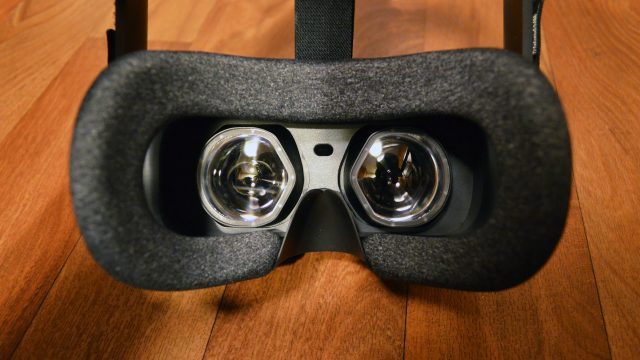
As HP worked with Valve on the headset, it got to lift the very same off-ear headphones from Index and put them right onto the G2. It’s great to have powerful built-in audio in a form-factor that doesn’t touch your ears or get in your way when you put the headset on. I hope to see more and more companies adopt the same. While HP says the drivers in the headphones are identical to those in Index, I noticed some distortion in certain higher pitched frequencies which didn’t sound great. I’m hoping HP can clear that up with some post-launch EQ adjustments.
The new Reverb G2 controllers are a welcomed change from the old WMR controllers. They mostly mimic Oculus Touch in design, with the same general handle shape and same set of buttons, sticks, and triggers. While they don’t feel quite as premium, they work more seamlessly with modern VR content which has largely coalesced around these inputs.
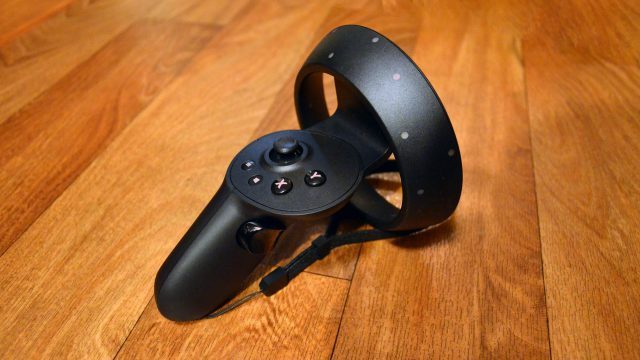
In terms of tracking, G2 is the first WMR headset to move from two to four cameras for its inside-out tracking. With the two extra cameras on the side of the headset, this gives controller tracking much more coverage and helps reduce the number of ‘stuck’ controller moments which happen when they spend too much time without line of sight to the cameras. Although coverage is increased, there’s still some tracking deadzones above and below the headset which can sometimes be annoying but never significantly impacted gameplay.
Head-tracking continues to be as solid as other WMR headsets and has little issue except for occasional software-induced stutter when transitioning between apps or loading screens. Overall precision and latency for controller-tracking is acceptable but not exceptional, showing more latency and jitter than we see with Oculus or SteamVR tracking.
G2 is comfortable enough, and better than G1, but doesn’t really move the bar overall for VR comfort. The rear strap does a fine job of gripping the back of your head while the top strap helps relieve pressure. The side straps for tightening the headset are elastic which is a little funky in practice because the straps and struts don’t slide as easily as they should. Because of that elasticity though, there’s enough flex to easily pull the headset on and off without adjusting the tightness every time. Beyond the straps, a physical IPD adjustment ranging from 60–68mm lets you best align the lenses with your eyes for clarity and comfort.

While many users will likely gloss over the Windows Mixed Reality environment and jump straight into SteamVR, the WMR environment is actually quite richly featured, allowing users to customize a persistent space and bring their desktop applications into VR in floating virtual windows. The WMR environment can also be fully controlled by VR controllers or a keyboard and mouse, which makes it a flexible way to do more than just play VR games.
While Reverb G2’s class-leading resolution would seem to make it a great candidate as a ‘virtual desktop’ for typical desktop productivity in VR, a realistically sized virtual monitor only sees around a 720p resolution (since it doesn’t stretch across the headset’s entire field of view). While this resolution is perfectly legible, truly working this way still feels like a novelty because of the reduction to your natural field of view and the even more limited ‘sweet spot’ of the headset; both factors mean you’ll need to move your head around much more while using a virtual monitor than you would on an equivalent real-life monitor, which feels like a compromise in practice, especially considering the ergonomic sacrifices of wearing a headset for long periods.
For a $600 headset, Reverb G2 delivers a strong value thanks to its excellent visuals and acceptable tracking. It feels like an especially good fit for simulator-focused use-cases where resolving power is a significant contributor to the experience.
HP Reverb G2 In-depth Review
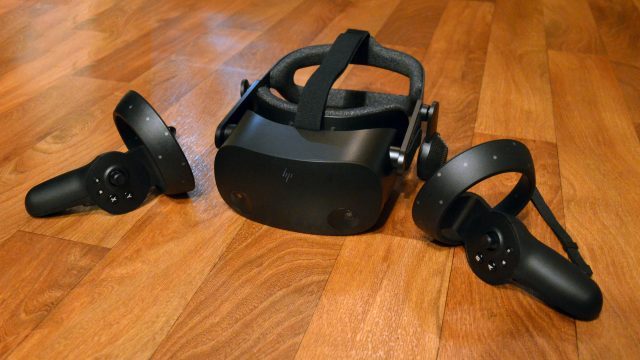
Display and Lenses
Let’s go right to Reverb G2’s most appealing feature, its display. With a 2,160 × 2,160 LCD display per-eye, the headset delivers class-leading resolution that blows most other headsets out of the water. While the below chart is an imperfect comparison because it doesn’t consider field of view, it does give a good look at where Reverb G2’s resolution stands in comparison to similar headsets (and the first-generation Rift CV1 for reference):
| Megapixels per-eye | |
| Rift CV1 | 1.3 |
| Vive Pro | 2.3 |
| Rift S | 1.8 |
| Quest | 2.3 |
| Index | 2.3 |
| Quest 2 | 3.5 |
| Reverb G2 | 4.7 |
Screen Door No More
Reverb G2 is the first headset in its class where the screen door effect (the unlit spaces between pixels) is virtually gone. Try as you might, the black grid between pixels that’s visible on most other headsets just isn’t discernable. That’s a critical threshold to cross as pretty much every headset in this class to date has had some level of visible screen door effect.
The lack of screen door and impressive sharpness makes everything in the headset look more solid and real, in a way that’s difficult to articulate. The extra sharpness also makes the sense of stereoscopic depth clearer in a way that seems more convincing to the brain.

The resolving power is so impressive that you might find yourself gawking. I definitely did. In Half-Life: Alyx I couldn’t stop looking at the absurd level of detail revealed in the medal of the shotgun. When I jumped into Robo Recall, I was blown away to see the level of detail the headset could reveal in the cloth on the legs of the robots.
If you’ve ever had the experience of getting new headphones and hearing previously unheard details in songs you’ve listened to a hundred times before—at times Reverb G2 feels a lot like that, but with your eyes instead of your ears.
Granted, the screen door being gone does not mean the headset is ‘retina resolution’, nor does it mean it offers perfect clarity. Because it isn’t retina resolution, aliasing is still visible, but it’s really only visible in niche circumstances, like when looking at tiny high contrast details.
Mura & Chromatic Aberration
Overall clarity of the headset is held back slightly by a bit of mura (inconsistency in pixel color and brightness across the display). In the headset the mura manifests in faint horizontal stretches, but it’s faint enough that it isn’t really noticeable except against certain colors.
HP’s prior headset, Reverb G1, makes a good point of comparison to show how much better G2 is—even though both headsets share the same resolution.
G1 had pretty noticeable mura along with red-smearing and chromatic aberration, all of which hurt its clarity despite its high resolution. G2 on the other hand has quite minimal mura, no red-smearing (or ghosting of any kind), and no chromatic aberration, giving it easily the best clarity of any headset in its class.
And while Quest 2 isn’t far behind in resolving power with its 1,832 × 1,920 (3.5MP) per-eye displays, the PC power behind G2 means the graphical fidelity of what you’re likely to see through the headset takes far better advantage of all those pixels. And yes, Quest 2 can connect to a PC as well, but this comes with an additional quality hit due to encoding compared to pixels natively rendered on the headset.
God Rays & Field of View
As for the lenses, Reverb G2 is using Fresnels like pretty much every other headset out there. And if you know anything about VR… you know what that means: god rays. Yes, Reverb G2 shows god rays emanating from high contrast elements just like every other headset with Fresnel lenses. It doesn’t seem any better or worse than other Fresnel headsets of this generation like Quest 2 or Rift S.
Luckily Reverb G2 doesn’t show any of the outer glare that’s plainly visible in Valve’s Index headset when looking at high contrast elements, though this seems to come at the cost of field of view, which isn’t as large as Index. While HP advertises the G2 field of view at 114°, to me it feels on par with Quest 2 (which has been unofficially deemed to be around 90° or 95°).
Lens Shape
There’s one quirk to the G2 lenses that makes them a little less comfortable on the eyes than similar headsets. The symmetrical shape of the lenses (which look like teardrops turned on their side) do not extent outward over the nose to provide more stereo field of view in the area just between your eyes. While this normally happens below the eyes (because your nose blocks that portion of your view), the effect created by the lenses creates a ‘nose-like’ blind spot higher up between your eyes.
Every headset has some blind spot in this area, but most shape their lenses to minimize it, whereas on G2 it’s a bit more noticeable. I’d guess this decision may have been made for manufacturing simplicity; such that both lenses are identical in shape instead of needing to make distinct ‘left’ and ‘right’ lens like on most other headsets.
Overall
Long story short, this is the headset with the clearest looking image and the most resolving power in its class.
Continue on Page 2: Audio, Controllers, Tracking »
The post HP Reverb G2 Review – Screen Door No More appeared first on Road to VR.
from Road to VR https://ift.tt/38TL0ir
via IFTTT
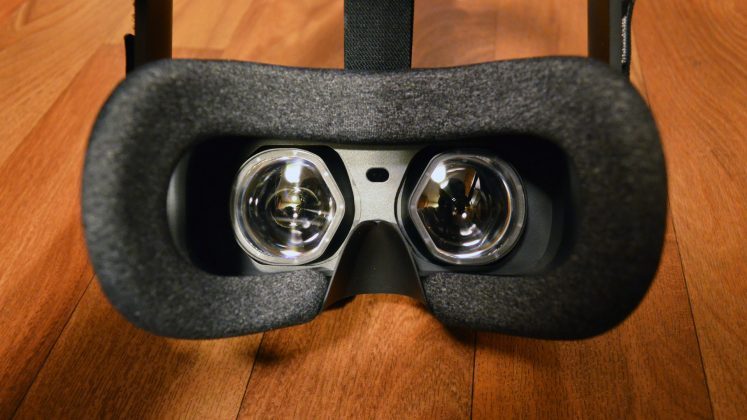
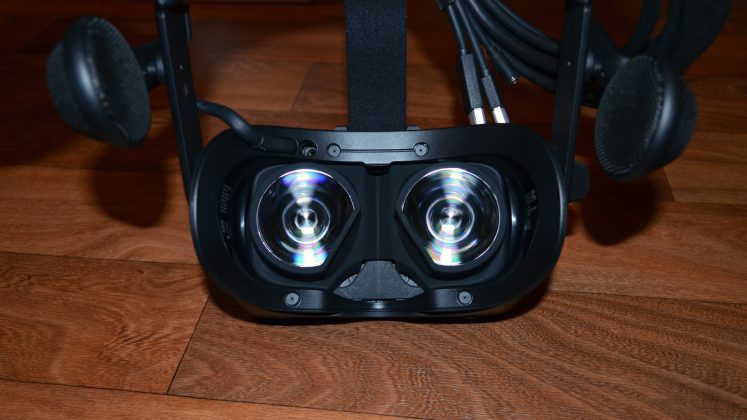
No comments:
Post a Comment